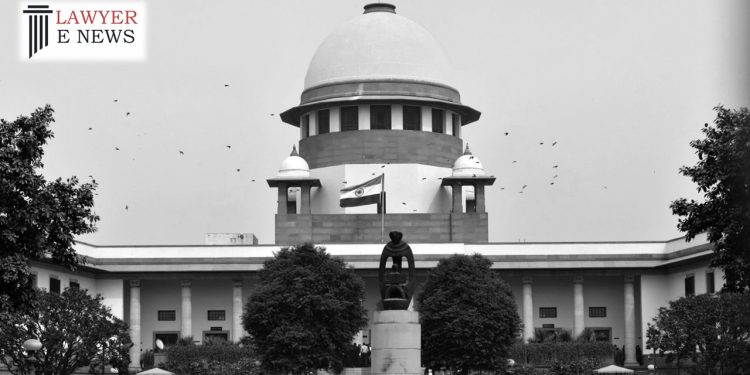Supreme Court upholds demonetisation by 4:1- Justice Nagarathna Dissents

The Union Government’s decision to demonetize the Rs. 500 and Rs. 1000 notes six years ago was maintained by the Supreme Court Constitution Bench with a 4:1 majority.
According to the majority, the Centre’s notification from November 8, 2016 is lawful and passes the proportionality test. Although demonetization was well-intentioned and well-thought out, Justice BV Nagarathna argued in her dissenting opinion that it must be ruled illegal for legal reasons (and not on the basis of objects).
The division bench reference was being addressed by the five-judge panel, which included Justices S. Abdul Nazeer, BR Gavai, AS. Bopanna, V. Ramasubramanian, and BV. Nagarathna. On December 7, 2022, the ruling had been put on hold. The division bench will now review the case once again.
Demonetization had a plausible connection to the goals (eliminating black marketing, terror funding, etc.), according to Justice BR Gavai, who read out the majority ruling. Whether or not the goal was accomplished is irrelevant, he said.
The bench additionally declared that it was impossible to call the 52-day waiting period for currency exchanges excessive.
It further stated that just because the suggestion came from the Central Government, the decision-making process could not be criticised. In terms of economic policy, tremendous caution is required. The executive’s wisdom cannot be replaced by the court’s wisdom.
The bench further ruled that the entire series of money can be demonetized under Section 26(2) of the RBI Act, which gives the government the authority to do so for any series of bank notes of any denomination. “Any” in Section 26(2) of the RBI Act cannot be given a restrictive connotation, it was stated. The current fashion is one of practical interpretation. Avoid interpretation that results in absurdity. When interpreting the Act, the purposes must be taken into account.
The bench continued, noting that there are built-in safeguards, that Section 26(2) cannot be declared unconstitutional due to excessive delegation.
Delegations are given to the central government, which is accountable to the parliament, which is accountable to the country’s citizens. There is a built-in safeguard, and the Central Government is compelled to act after consulting with the Central Board.
In her dissenting opinion, Justice BV Nagarathna stated that the Centre could not just demonetize the entire series of Rs. 500 and Rs. 1000 currency notes because it was a serious concern. Despite the measure’s good intentions and careful consideration, she stated, it must be ruled illegal on legal grounds (and not on the basis of objects).
“Demonetizing all note series under the direction of the Central Government is a significantly more serious matter than demonetizing specific note series by the bank. Therefore, legislation is required.
The judge added that the RBI had just given its approval to the Centre’s wish for demonetization rather than demonstrating independent thought. Looking at the data provided by the RBI, it is clear there was no independent application because they contain the phrase “as desired by the Central Govt.” In 24 hours, the full workout was completed.
On the issue of the authority of the Central Government under Section 26(2) of the RBI Act, she also dissented from the majority opinion.
She first argued that the phrase “Any series” in Section 26(2) of the RBI Act cannot be interpreted to mean “all series,” and that “Section 26(2) can be for a particular series of currency notes & not for the entire series of currency notes of a denomination.”
The judge then ruled that the RBI Act does not let the national government to start the demonetisation process. She claimed that Section 26(2) required the central board of the RBI to make the proposal for demonetization. Justice Nagarathna also ruled that the federal government must use a law or an ordinance derived from Entry 36 of List I, which refers to money, coins, legal tender, and foreign exchange, in order to start the demonetisation process.
The idea came from the Central Government, and the RBI’s opinion was requested, the judge continued. Under Section 26(2) of the RBI Act, the RBI cannot interpret a given view as a “recommendation.” Demonetization proposals from the Central Government are not covered by Section 26(2) of the RBI Act. If confidentiality is required, it will be done so by legislation and an ordinance.
The Judge, however, ruled that no relief could be given in the case because the notification had previously been followed up on and six years had passed since. She explained that this proclamation of law would only apply going forward and would not have any bearing on previous actions.
The Constitution Bench was responding to queries regarding demonetisation that were sent to it in 2016.
“After responding to the reference, we order the registry to present the petitions to the honourable Chief Justice of India so that they can be posted before the proper bench. After reading out the operative paragraph, Justice Gavai said, “It goes without saying that all other contentions are left open to be addressed by the benches before which the issue will be put.






